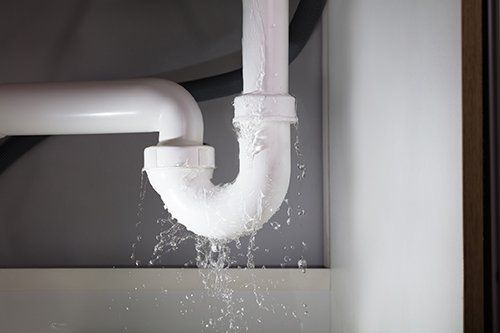Your Residential Most Typical Leak Factors: Analysis
Your Residential Most Typical Leak Factors: Analysis
Blog Article
Every person has their personal rationale on the subject of How to detect water leaks in your home.

Leakages not just cause waste of water however can also create unneeded damage to your residence and advertise unwanted natural development. By looking and also understanding for daily circumstances that trigger leaks, you can shield your residence from future leaks and unneeded damage.
Immediate temperature adjustments.
Severe temperature level adjustments in our pipelines can create them to increase as well as contract suddenly. This growth and also contraction may create splits in the pipelines, specifically if the temperature level are below freezing. If you maintained an eye on how your plumbing works, it would be best. The visibility of the previously mentioned situations regularly shows a high threat.
Rusty water systems
This may be the cause of staining or warping on your water pipelines. If our plumbing system is old, consider changing the pipelines because they are at a higher risk of rust than the newer versions.
Faulty Pipe Joints
The factor at which your pipelines connect is often the weakest link in the waterline. Pipeline joints can degrade gradually, causing water leakages. Unfortunately, most of pipe joints are not easily visible. If you have noisy pipelines that make ticking or banging sounds, particularly when the hot water is activated, your pipeline joints are probably under a lot of stress. It is recommended to have your plumber check your system annually.
Encroaching roots
Many water leakages begin outside the home rather than inside it. You could discover wet patches or sinkholes in your backyard, as well as that could mean that tree origins are getting into water lines triggering water to seep out.
Poor Water Connectors
At times, a leak can be triggered by loosened tubes and pipes that supply your home appliances. In case of a water connections leakage, you may observe water running directly from the supply line or puddles around your devices.
Clogged Drains
Blocked drains might be aggravating and also inconveniencing, but they can in some cases wind up creating an overflow leading to burst pipes. Maintain getting rid of any type of products that might drop your drains that can block them to prevent such hassles.
All the above are sources of leakages but not all water leaks arise from plumbing leakages; some leakages could originate from roof covering leakages. All leakages ought to be fixed right away to stay clear of water damages.
Leakages not only create waste of water yet can likewise create unneeded damage to your home and also advertise undesirable organic growth. By looking and comprehending for daily situations that create leakages, you can protect your home from future leakages and unneeded damage. Today, we will certainly look at six leakage triggers that might be triggering your pipes to drip.
At times, a leakage can be created by loose pipes as well as pipes that provide your home appliances. In situation of a water links leakage, you might notice water running straight from the supply line or puddles around your home appliances.
TYPES OF WATER LEAKS YOU SHOULD BE FAMILIAR WITH
Shower Fixture Water Leaks
If you notice a water leak near your shower fixture, perform an inspection to confirm if you are able to find broken caulk lines. As your shower fixture becomes older, it is not uncommon for water to leak onto the other side of the frame. To fix this type of plumbing leak, scrape off the old caulk and run a new bead of it around the shower fixture to seal up any fractured crevices and holes.
Bathtub Drainage Water leaks
To fix this type of leak in a bathtub, remove the drain flange and clean it. Next, you should also remove the rubber gasket located beneath the tub’s drain hole. Buy a replacement gasket that matches the old version and install it in the same location. Once the drain flange and rubber gasket are installed, apply a small amount of silicone caulk to the drain to prevent water leakage below your tub.
Water Pipe Leaks Behind Walls
Issues such as discolored grout and loose shower tiles may be caused by a water pipe leak behind the walls in your bathroom. To fix this plumbing leak, you will be required to remove the tiles, grout, or caulk in your shower. Once the tiles in your shower have been removed, perform an inspection of the drywall to confirm if it’s moist or wet. If you notice water marks or mold on the wall, this is an indicator of a water pipe leak.
Toilet Leaks
Nobody likes a toilet leak. It can cause water damage to the subfloor, joists, or even the ceiling in the room below. To combat this type of water leak, you will need to reinstall your toilet with a brand new ring of wax. If the toilet sits uneven, be sure to add toilet shims to correct the issue. Do you notice a broken bolt slot or flange? We recommend performing a new metal flange installation to remediate this issue.
Sink Water Leaks
To prevent damage to the beautiful counter tops in your kitchen or bathroom, tighten the base of your sink to prevent a water leak. Next, scrape away any old caulk around the sink and apply a fresh coat. Prior to using the kitchen or bathroom sink, you will need to secure the fixture to the countertop with the clips located beneath the sink rim to prevent a water leak.
https://www.fenwickhomeservices.com/blog/6-types-of-water-leaks-you-should-be-familiar-with/

Hopefully you enjoyed reading our part on Common Water Leaks In House. Thank you for finding the time to read our article. Sharing is nice. Helping others is fun. Bless you for your time. Kindly check up our blog back soon.
Leading plumbing expertise for emergencies. Report this page